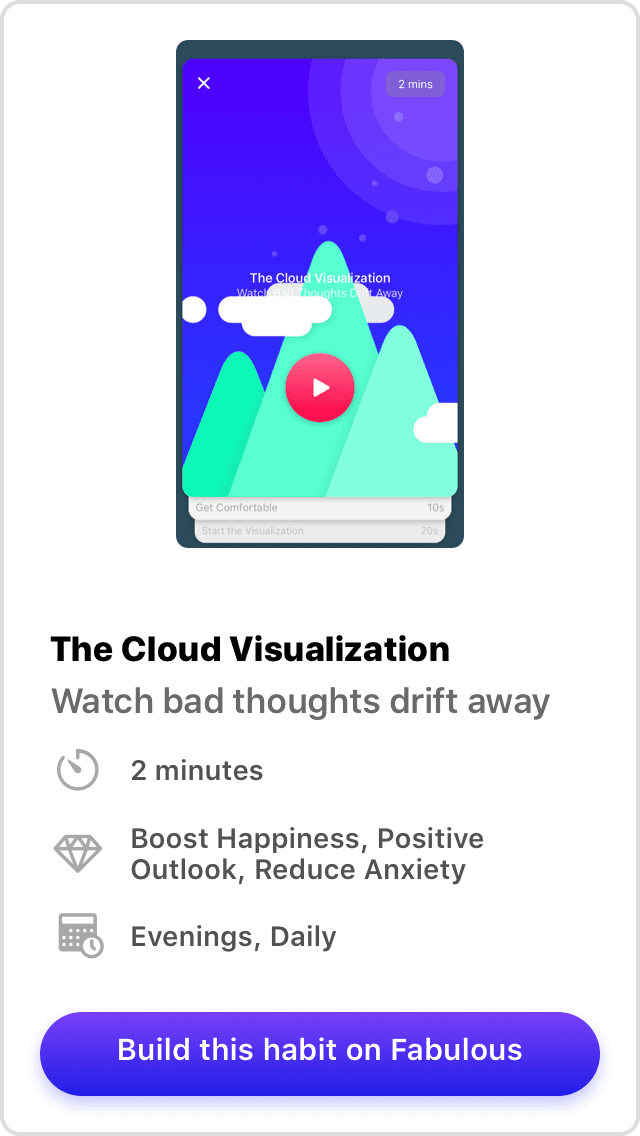You’re about to give a speech to a room full of important people. As you make your way to the podium on shaky legs, you suddenly feel too warm, your palms sweat, a lump rises in your throat, and you think you might keel over.
Anxiety feels different for everyone but there’s one constant universal truth- it’s an unpleasant experience.
While some of us might only feel this way before a big presentation, a flight, or an important occasion, others struggle with these sensations every day.
Whether or not it’s a regular occurrence, it’s a good idea to have practiced strategies on hand to get you through an anxiety or panic attack.
Let’s take a closer look at common anxiety symptoms.
What Does An Anxiety Attack feel Like?
It’s normal to feel anxious from time to time, in fact, according to The Anxiety and Depression Association of America, anxiety is the most common form of mental illness, affecting up to 40 million Americans.
Although they can be distressing, these feelings are also a way that your body and brain try to keep you safe by alerting you to potential dangers.
When feelings of anxiety become unmanageable or interrupt your daily life, it’s time to look for ways to cope with the symptoms.
While having an attack you might feel emotions like dread, worry, nervousness, or panic.
Along with these classic symptoms, people with anxiety can also endure some of the following physical complaints; headaches, backaches, a fast or irregular heartbeat, and nausea.
In the midst of an anxiety attack, people feel like they are spinning out of control. Being able to calm yourself down and find a way out can seem unrealistic. That’s why it’s so important to develop coping mechanisms and strategies before an attack hits.
Thankfully anxiety is one of the most treatable forms of mental illness. In conjunction with your health provider, you may treat your symptoms with medication, therapy or a range of coping strategies, including visualization.
Fabulous can help you build a visualization practice that acts as an emergency point of call when anxiety strikes. This is how to start.
Why and How Visualization Works
Establishing a visualization habit isn’t just about positive thinking, although that’s part of it. During your visualizations, you create a space of safety and serenity where powerful thoughts and beliefs can be suggested to your relaxed subconscious.
Research shows that your brain actually cannot distinguish between a visualization and an actual memory. This gives you an amazing opportunity to build resilience and avoid overwhelming feelings of anxiety. If you visualize yourself releasing feelings of worry your brain will believe it really happened.
You’ll be creating a “memory” of you confidently controlling your negative emotions and quelling feelings of panic and stress.
With repetition, you can override the limiting beliefs that anxiety imposes on you. It’s as simple as creating a space to envision your success.
When you are in this oasis of serenity you are able to retreat from anxiety symptoms until they recede and you feel better able to cope.
If you already meditate you might find it easier to begin a visualization practice. At first, it can be difficult to concentrate, especially if you feel like you are spiraling out of control.
That’s why it’s essential to practice this technique when you are calm and before you need it.
Start by working through The Cloud Visualization in the Make Me Fabulous programs of the Fabulous app. When you are identifying your negative thoughts think specifically about those ones that lead to feelings of anxiety and panic and write them down.
Create Your Own Sensory Visualization
Visualizations only work if they feel real. In order to make the scene believable and vital, you must employ all your senses.
Make yourself comfortable and limit all distractions before you begin. Many people choose a peaceful beach or quiet forest as their visualization setting but as long as it’s somewhere you feel calm and peaceful it can be anywhere you can imagine.
Take a few deep breaths before you begin. Explore your imaginary surroundings fully in your mind. How does this place sound, smell, feel, look and taste?
You might picture yourself sitting alone on a sandy beach. Now imagine you can smell the scent of the ocean as you look out towards the peaceful horizon. You feel the scratchy grains of sand beneath your toes and listen to the waves gently lapping at the shore. You see yourself on this beach as the salty taste of the ocean settles on your lips.
Your visualization space is a safe, peaceful cocoon from the world and all your troubles. Keep it up by taking on the Fabulous Mindbus visualization





